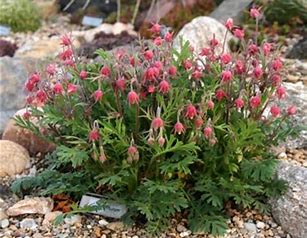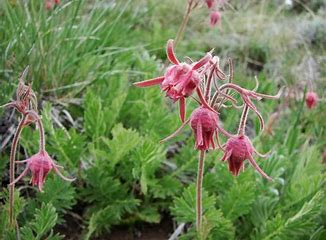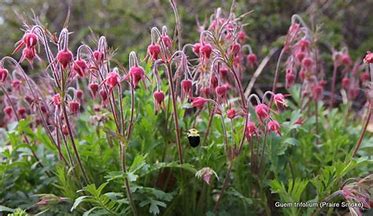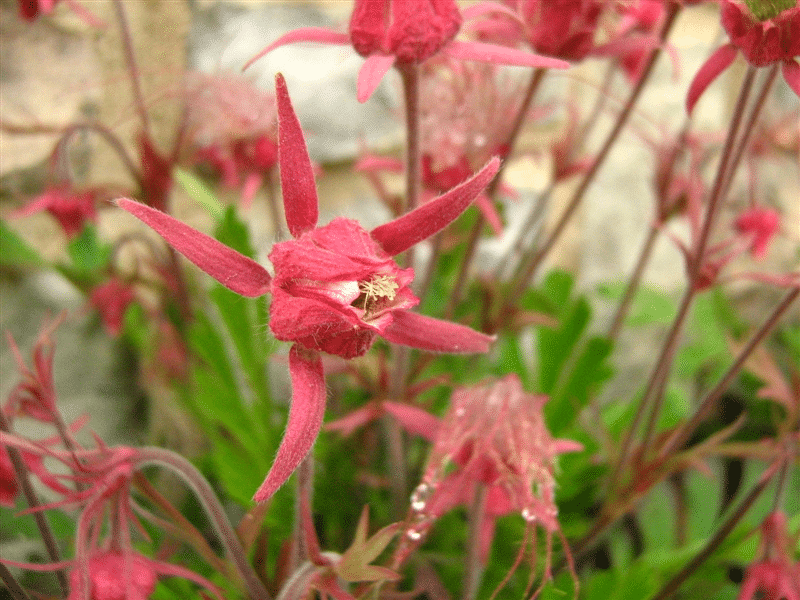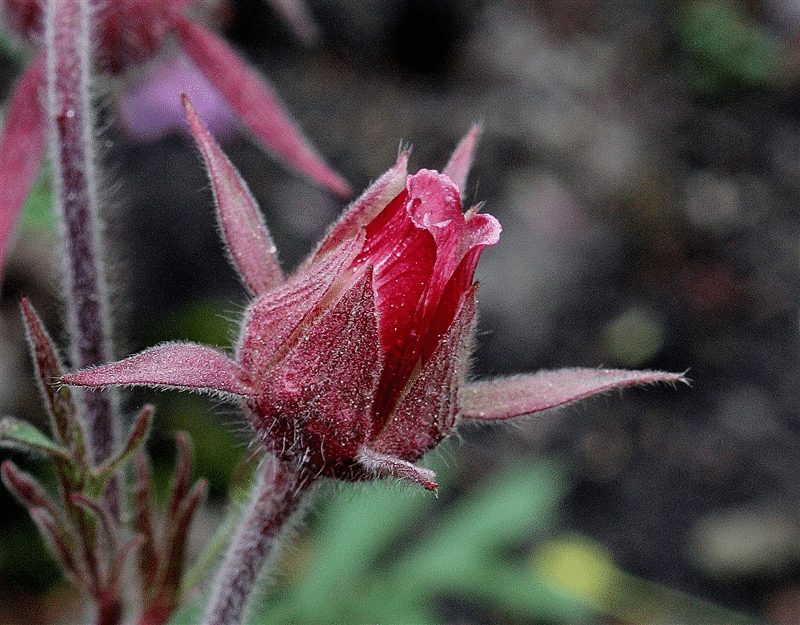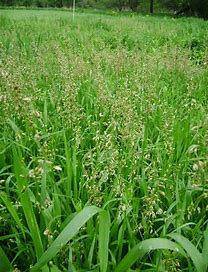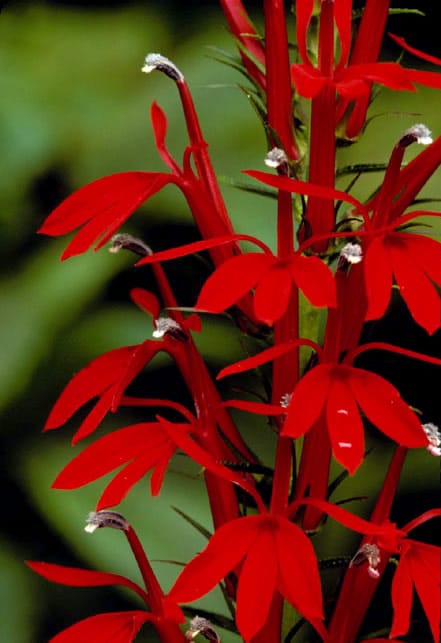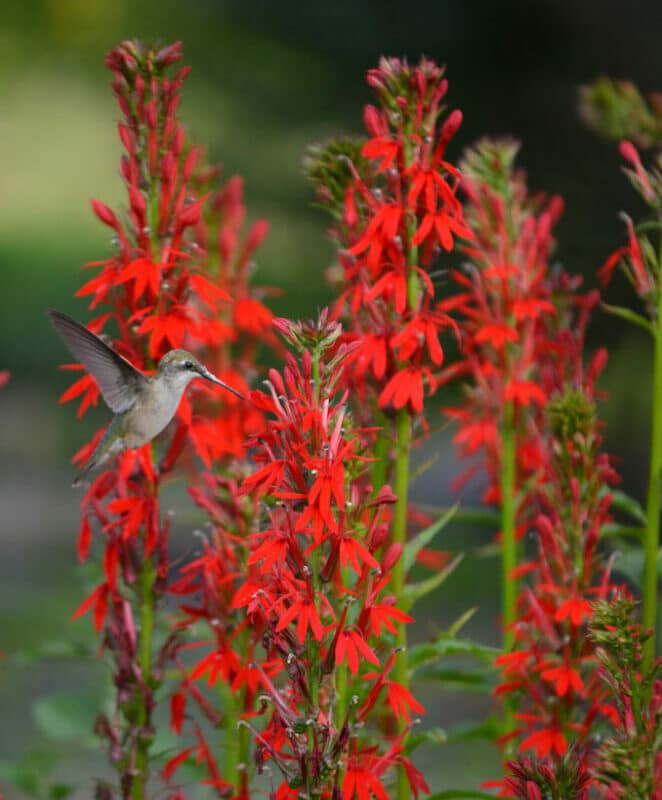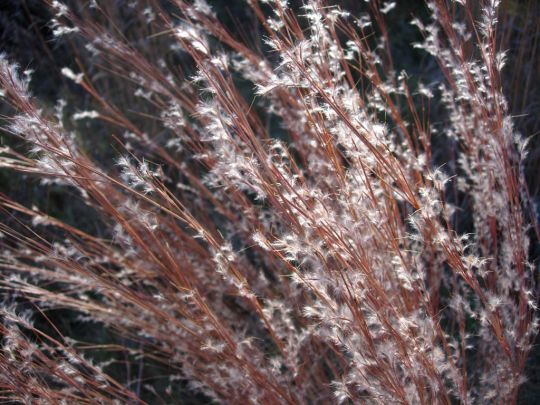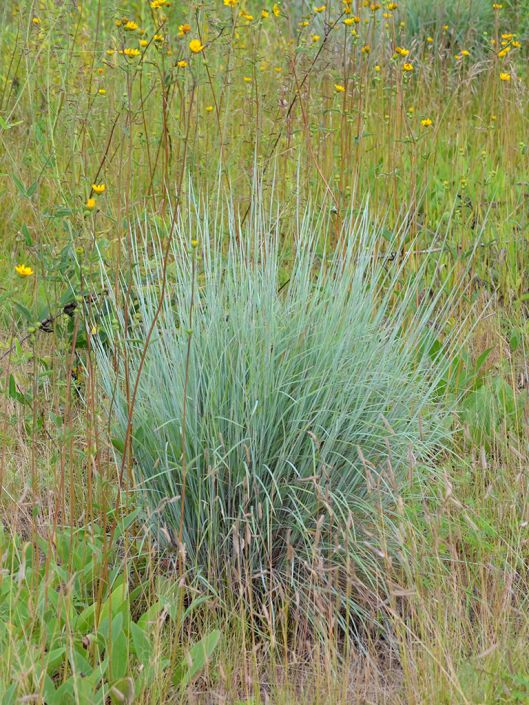Description
The silky, flowing styles of the fruiting stage of Prairie Smoke (Geum triflorum) never fail to win admirers at first sight. When setting seed, large stands of the plant create a gauzy effect that resembles smoke hovering close to the ground. Blooming in spring to early summer, Prairie Smoke will spread slowly from its roots in well-drained, dry to wet-mesic soils. It prefers full to partial sun and has a native range from the northern tier of the US through most of Canada. Spreads by rhizomes and can be naturalized to form an interesting ground cover. Perhaps its most distinguishing feature is not the reddish pink to purplish, nodding, globular flowers that bloom in late spring, but the fruiting heads which follow. As the flower fades and the seeds begin to form, the styles elongate (to 2″ long) to form upright, feathery gray tails which collectively resemble a plume or feather duster, all of which has given rise to a large number of regional descriptive common names for this plant such as torch flower, long-plumed purple avens, prairie smoke, lion’s beard and old man’s whiskers. The feathery seed tails act as sails in aiding dispersal of the seeds.
Best grown in dry, well-drained soils in full sun. Tolerates light shade and prefers some afternoon shade in hot summers. Prefers cool summer climates. May be grown in medium moisture, well-drained soils, but often will die out if subjected to wet winter soil conditions.
Click here for more information from USDA-NRCS.


